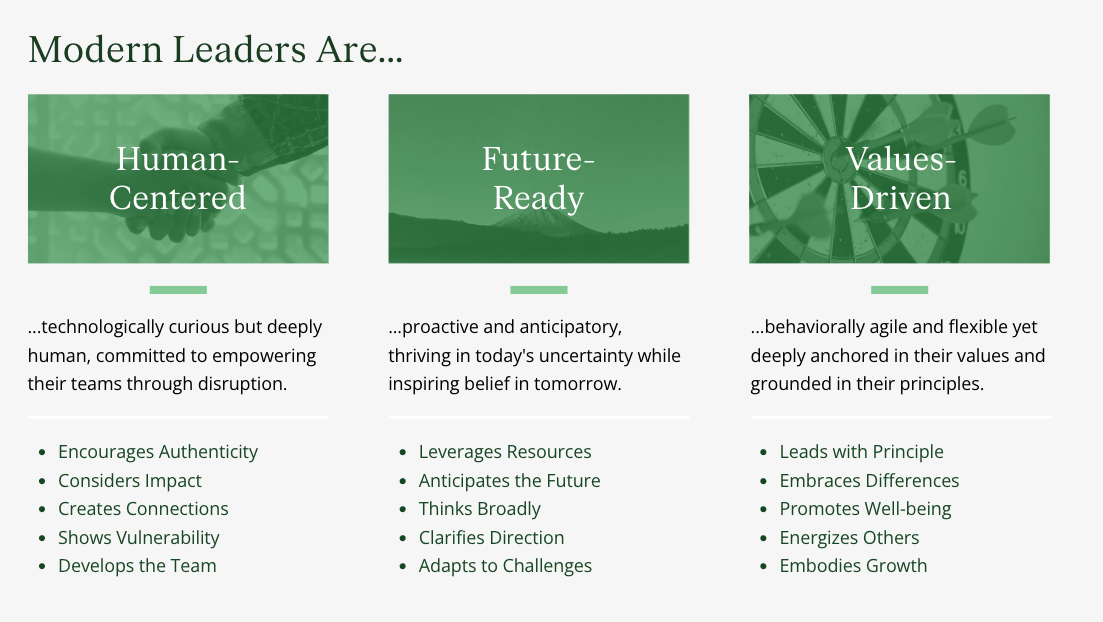Being a leader in the AI era can be humbling. Work that once took professional managers weeks to complete, such as building a strategic plan for a new market, writing an in-depth analysis report, or optimizing complex budget decisions, can now be nimbly handled by large language models in seconds. The judgment and common sense honed over years of executive experience gets overruled more and more by a software program that suggests otherwise.
Yet while technology may feel like it's stripping away the advantages of human intellect and expertise, AI also demands that leaders practice more unique human skills: Creativity. Communication. Empathy. And yes, judgment. Data from Workday shows that 83% of employees believe AI will make such human skills even more essential, and most workers (76%) are yearning for more human connection as AI usage grows.
It's the fundamental paradox of modern leadership: Today, leaders must be technologically curious, yet deeply human. They must operate with agility and flexibility yet remain anchored in their values. And at a time of not only accelerated automation, but increasing geopolitical turmoil and social unrest, they must navigate widespread uncertainty while inspiring belief about the future in their people. This binary leadership mandate calls not just for different skills. It requires new behaviors that reflect trust, transparency, systemic awareness, and adaptability.
AI will not replace leaders. But leaders who fail to modernize their behavior will be replaced.
Developing such behaviors in the age of AI is no longer optional—being human-centered, future-ready, and values-driven is now enterprise-critical. Yet most leadership development frameworks aren’t built for the moment we’re in. They overemphasize the assessment of traits people already possess and undervalue the behaviors they can still develop. Despite decades of effort and billions spent, research consistently shows that such development fades within weeks as people revert to old habits, especially when their organizations don’t change, too.
What Actually Works: Modern Leadership Behaviors
Modern's research shows that 70% of the variation in team members’ experience is explained by their leader’s observable behaviors. Improving just one of a concrete set of those behaviors—actions we call Modern Leadership Behaviors (MLB)—translates into measurable results, whether in team performance, employee empowerment, or retention. Implementing these behaviors doesn't mean adding a new model. It’s about rewiring how leadership shows up inside the systems most organizations already have.
Our research and experience working with nearly 600 organizations have consistently shown that when leadership development is focused on coachable behaviors that translate easily into action and are specific, precise, and scalable, the impact is measurable and dramatic.
For instance, when comparing leaders who almost never practice Modern Leadership Behaviors to those who almost always practice them, we found their direct reports’ experience ratings were roughly 170% higher. Even minor shifts in behavior deliver substantial gains: Leaders who demonstrate these behaviors just slightly more than those who do them often can see ratings that are 20% higher.
The Science Behind the Solution
We built this framework through a rigorous series of studies that included interviews with leadership experts and C-suite executives, guidance from work psychology researchers, and a demographically representative sample of more than 6,500 direct reports and leaders across multiple job levels and industries. The process led us to nearly 80 Modern Leadership Behaviors that we organized into 15 related behavior groups and then clustered into three broad archetypes.

Implementing the MLB framework doesn’t require organizations to replace what they have. It provides precise behaviors that bring concepts to life, making them more practical and easier to act on.
We find this research is especially visible in three high-stakes areas:
- Organizational culture and change: Adopting a few shared, observable behaviors across the organization delivers cultural cohesion and horsepower behind your business strategy. Leaders get a blueprint for guiding people through uncertainty and change, prompting real action rather than just vague language.
- Succession planning: Integrating leadership behaviors into the definition of who is ready now and next makes succession more objective and the future less ambiguous. Discover who’s ready to step up and the strength of your leadership pipeline with data.
- Individual development: Assessing current behaviors to understand strengths, then building targeted learning and development plans against them, brings clarity on how leaders need to change for the future and helps improve AI readiness. No matter their starting point, people grow from coaching and training on behaviors that are focused, actionable, and measurable.

AI will not replace leaders. But leaders who fail to modernize their behavior will be replaced. As AI takes over task work, what leaders do—specifically, how well they optimize the human element of work —will be what drives organizations forward. Those that can manage the paradoxical demands of leadership today while practicing behaviors that are anchored in humanity, proactive about the future, and grounded in their values will discover a better lever for organizational reinvention. In an AI-driven world where how leaders act shapes what the organization becomes, behaviors are the new currency of competitive advantage.
.png)





